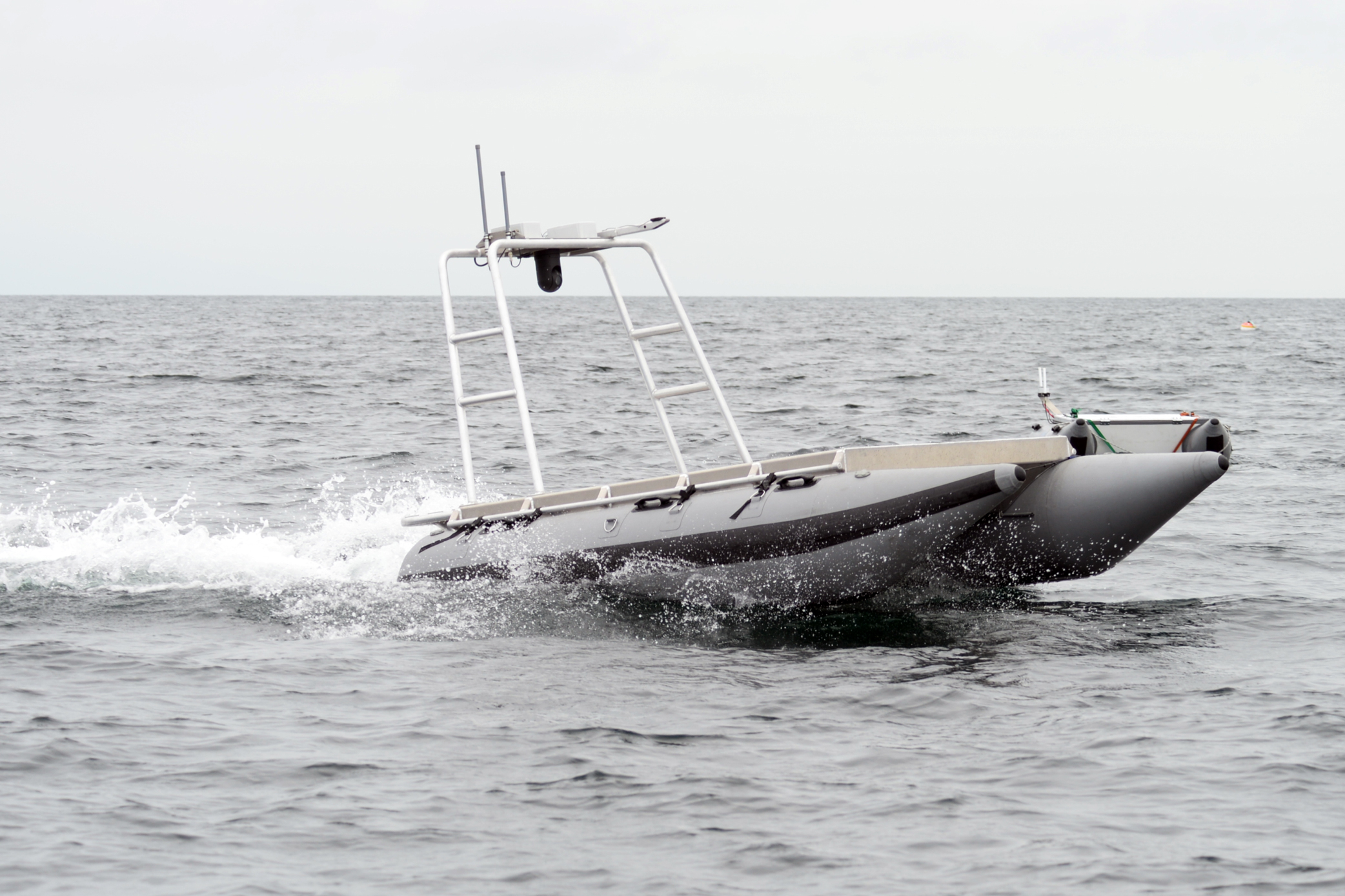
Sebastian Berg was responding to a mock oil spill off Vancouver Island when he heard a pair of Coast Guard workers were stuck on a beach without lunch.
Even in a real oil spill, people need to eat.
On any other day, the Coast Guard would have had to pull two or three people off the oil-spill response to crew a boat and deliver food.
But Berg doesn’t work for the Coast Guard and this wasn’t a typical drill.
The Ts’ou-ke First Nation was jointly leading the exercise, and Berg was there as the product development officer for Shift Coastal Technologies — a Nanaimo company that just sold the Canadian Coast Guard its very first autonomous surface vessel (ASV).
Called the OceanSled Ranger, the 10-foot craft looks like a small grey Zodiac with a high, flat deck. There is no tiller or steering wheel in sight.
The Coast Guard and coastal First Nations want to see how an ASV like the Ranger can help in marine emergencies, especially nearshore oil spills.

The Ranger has cameras, a loudspeaker and can be loaded with sensors. It can help find an oil spill, inspect containment boom and deploy tracking buoys without putting any people at risk.
Although small and not very powerful, the Ranger could help with marine rescues, especially in shallow, rocky waters that would be hard for a larger boat to navigate. The Ranger can also be equipped with gear to map the ocean floor or collect data on air and water quality.
And in a pinch, Berg realized during the Vancouver Island drill, it could easily deliver a sandwich.
“They needed to get a qualified crew together into a landing craft just to bring some sandwiches out to these people who were standing out on the beachhead,” he said.
“I looked at them and said, ‘Well, why don’t we just send the Ranger out?'”
Shift Coastal Technologies tested the Ranger for two years with the Ts’ou-ke First Nation to see how an ASV could help their marine-response team.
“There is a lot of difficult coastline and not very many people,” Berg said.
The same is true for Haida Gwaii. After the Coast Guard bought a prototype Ranger this summer, the first place they deployed it was in the waters off Moresby Island.
In June, local marine rescue and environmental-spill response crews got to test the Ranger together with an aerial drone they flew at the same time.
The drone can quickly fly to a site and send coordinates to the ASV to follow.
Right now, Berg said the Ranger is radio-controlled and can be operated up to 4 km away. It can be outfitted with a satellite link, but it will cost more.
“The most basic design challenge is always that it’s very easy to design something with an open checkbook,” Berg said.
Powered by electric motors, the Ranger can run four or five hours at top speed and far longer at its typical working speed of 1.5 or 2 knots.
On autopilot, the Ranger can follow a course or do a grid search of a given area.
An operator needs to watch the cameras for obstacles, but the Ranger is built to take a hit from rocks or half-submerged logs. In a really strong hit, its thrusters automatically flip up and out of the way.
A Coast Guard spokesperson said in an email that delivery of the Ranger marks “a significant milestone in maritime technology and expanding our set of tools in marine environmental and hazard response.”
The spokesperson said the Coast Guard will continue testing the prototype Ranger to guide further development, and will have more to say about how it can use ASVs once the test phase is finished.